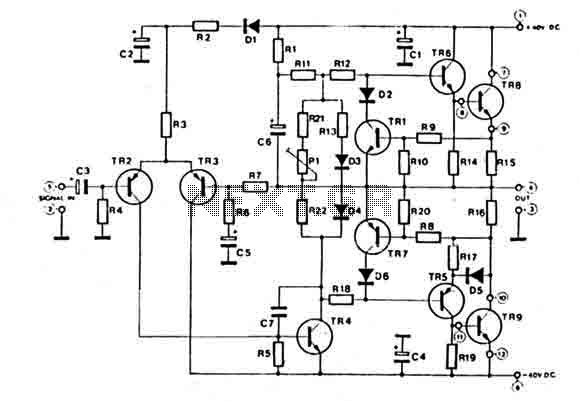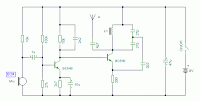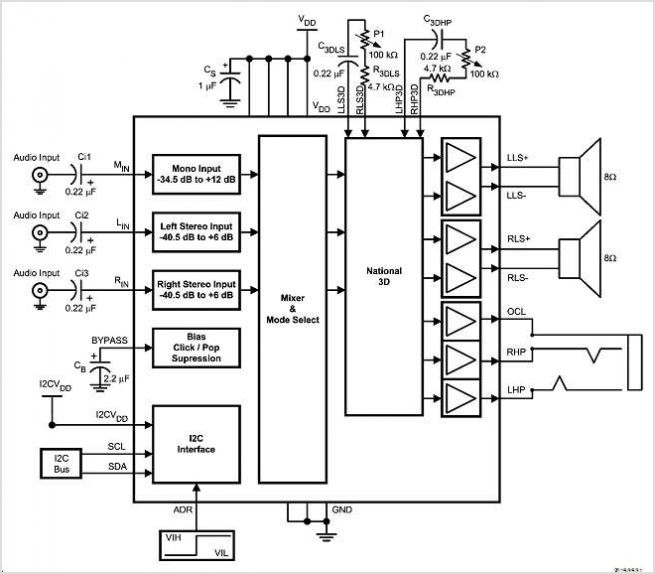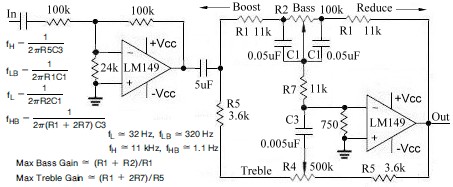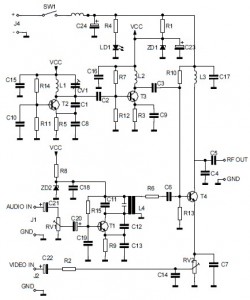
Audio Fader
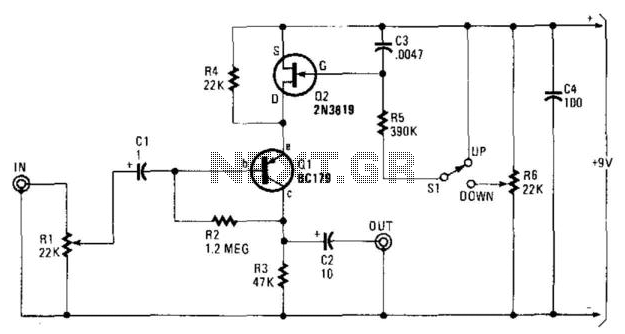
In this circuit, Q1 serves as a simple amplifier with gain control provided by a variable emitter resistance supplied by FET Q2. When switch SI is in the up position, capacitor C3 discharges through resistor R5, resulting in a decrease in the gain of Q1 as Q2 is driven toward cut-off. Conversely, in the down position, Q2 conducts more current, influenced by the setting of resistor R6, leading to an increase in gain. By adjusting either R5 or C3, different fade rates can be achieved.
The circuit operates primarily through the interaction between the components Q1, Q2, R5, R6, and C3. Q1, functioning as the main amplification stage, relies on the emitter resistance to modulate its gain. The FET Q2 acts as a variable resistor, controlling the amount of current flowing through the emitter of Q1. This setup allows for dynamic adjustment of the amplifier's characteristics based on the position of switch SI.
When SI is switched to the up position, C3 begins to discharge through R5, which diminishes the voltage across the emitter of Q1. As a result, Q2 transitions toward a cut-off state, which reduces the overall gain of the amplifier. This behavior is crucial for applications requiring a gradual decrease in output signal, such as audio fading effects.
In contrast, when SI is toggled to the down position, the current through Q2 increases, enhancing the gain of Q1. The extent of this gain increase is influenced by the resistance value of R6, which can be adjusted to fine-tune the amplifier's response. Consequently, this flexibility allows for precise control over the amplification characteristics.
The combination of R5 and C3 plays a significant role in determining the fade rates. By varying the resistance of R5 or the capacitance of C3, users can create a range of fading effects, making the circuit versatile for different applications, such as in sound engineering, where gradual transitions in audio levels are often required. This circuit exemplifies a straightforward yet effective approach to gain control in amplification systems, highlighting the importance of component interaction in achieving desired performance outcomes. In this circuit, Ql is a simple amplifier that has its gain controlled by a variable emitter resistance supplied by FET Q2. In the up position of SI, C3 discharges through R5 and the gain of Ql decreases because Q2 is driven toward cut-off. In the down position, Q2 conducts more, depending on the setting of R6, which causes a gain increase.
By varying R5 or C3, various fade rates can be obtained.
The circuit operates primarily through the interaction between the components Q1, Q2, R5, R6, and C3. Q1, functioning as the main amplification stage, relies on the emitter resistance to modulate its gain. The FET Q2 acts as a variable resistor, controlling the amount of current flowing through the emitter of Q1. This setup allows for dynamic adjustment of the amplifier's characteristics based on the position of switch SI.
When SI is switched to the up position, C3 begins to discharge through R5, which diminishes the voltage across the emitter of Q1. As a result, Q2 transitions toward a cut-off state, which reduces the overall gain of the amplifier. This behavior is crucial for applications requiring a gradual decrease in output signal, such as audio fading effects.
In contrast, when SI is toggled to the down position, the current through Q2 increases, enhancing the gain of Q1. The extent of this gain increase is influenced by the resistance value of R6, which can be adjusted to fine-tune the amplifier's response. Consequently, this flexibility allows for precise control over the amplification characteristics.
The combination of R5 and C3 plays a significant role in determining the fade rates. By varying the resistance of R5 or the capacitance of C3, users can create a range of fading effects, making the circuit versatile for different applications, such as in sound engineering, where gradual transitions in audio levels are often required. This circuit exemplifies a straightforward yet effective approach to gain control in amplification systems, highlighting the importance of component interaction in achieving desired performance outcomes. In this circuit, Ql is a simple amplifier that has its gain controlled by a variable emitter resistance supplied by FET Q2. In the up position of SI, C3 discharges through R5 and the gain of Ql decreases because Q2 is driven toward cut-off. In the down position, Q2 conducts more, depending on the setting of R6, which causes a gain increase.
By varying R5 or C3, various fade rates can be obtained.
